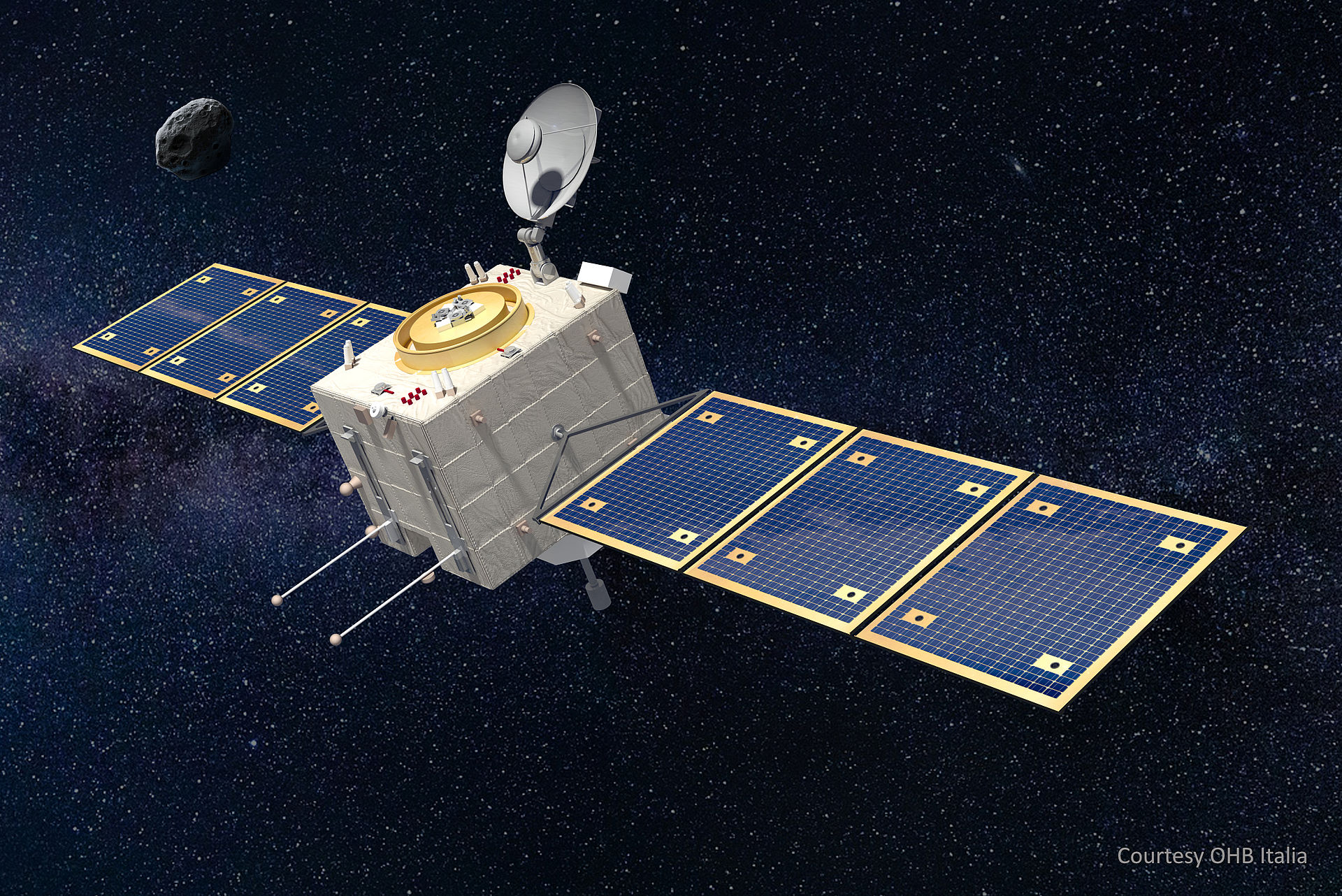THE MISSION
COMET-I is a new type of mission, launched before its primary target has been found. The only way to encounter new comets or interstellar objects is to discover them inbound to our solar system with enough warning to direct a spacecraft to them. Before, the time between discovery of a comet and it leaving the solar system, was too short to be able to study the object with a spacecraft. With current advances in surveying the sky more deeply, coherently, and rapidly, this time span is now much longer, allowing for preparations of a satellite to observe the object better.
Comet Interceptor has been selected as ESA’s new fast-class mission in its Cosmic Vision Programme. Comprising a main spacecraft and two small probes, it will be the first to visit a truly pristine comet or an interstellar object that is only just starting its journey into the inner Solar System. One of the probes is provided by JAXA
The composite spacecraft will be launched into the second Sun-Earth Lagrange Point and will wait there up to typically three years until an interesting target object is identified. The composite spacecraft will then enter a transfer trajectory taking between 0.5 and 4 years after which the spacecraft enters its final approach and encounter phase.
Before the encounter the two small probes will be released and together with the main spacecraft perform simultaneous observations from multiple points near the comet, creating a 3D profile of a ‘dynamically new’ object that contains material surviving from the dawn of the Solar System.
LAUNCH DATE
COMET-I is planned to be launched in 2029 together with the ARIEL satellite.

